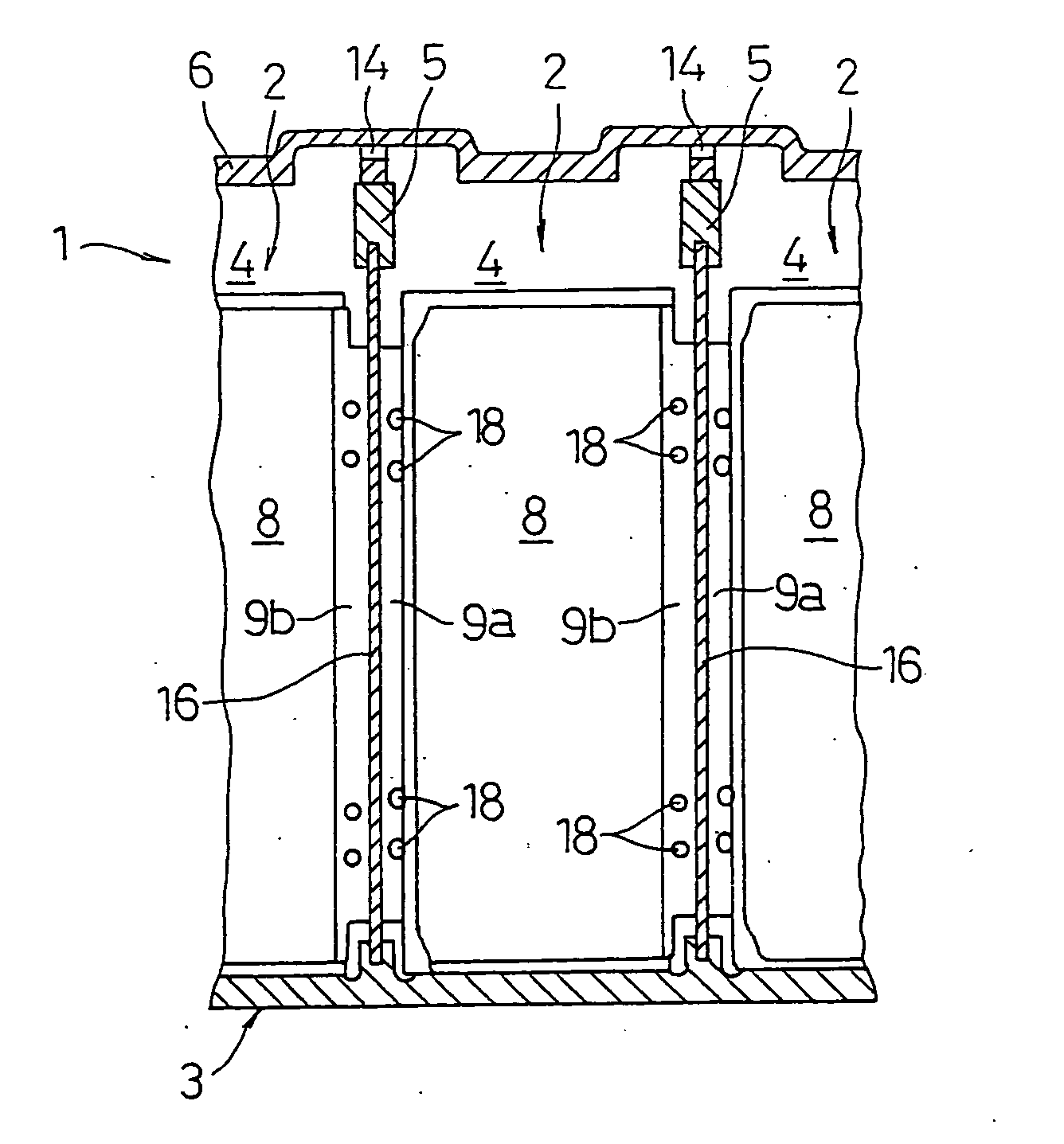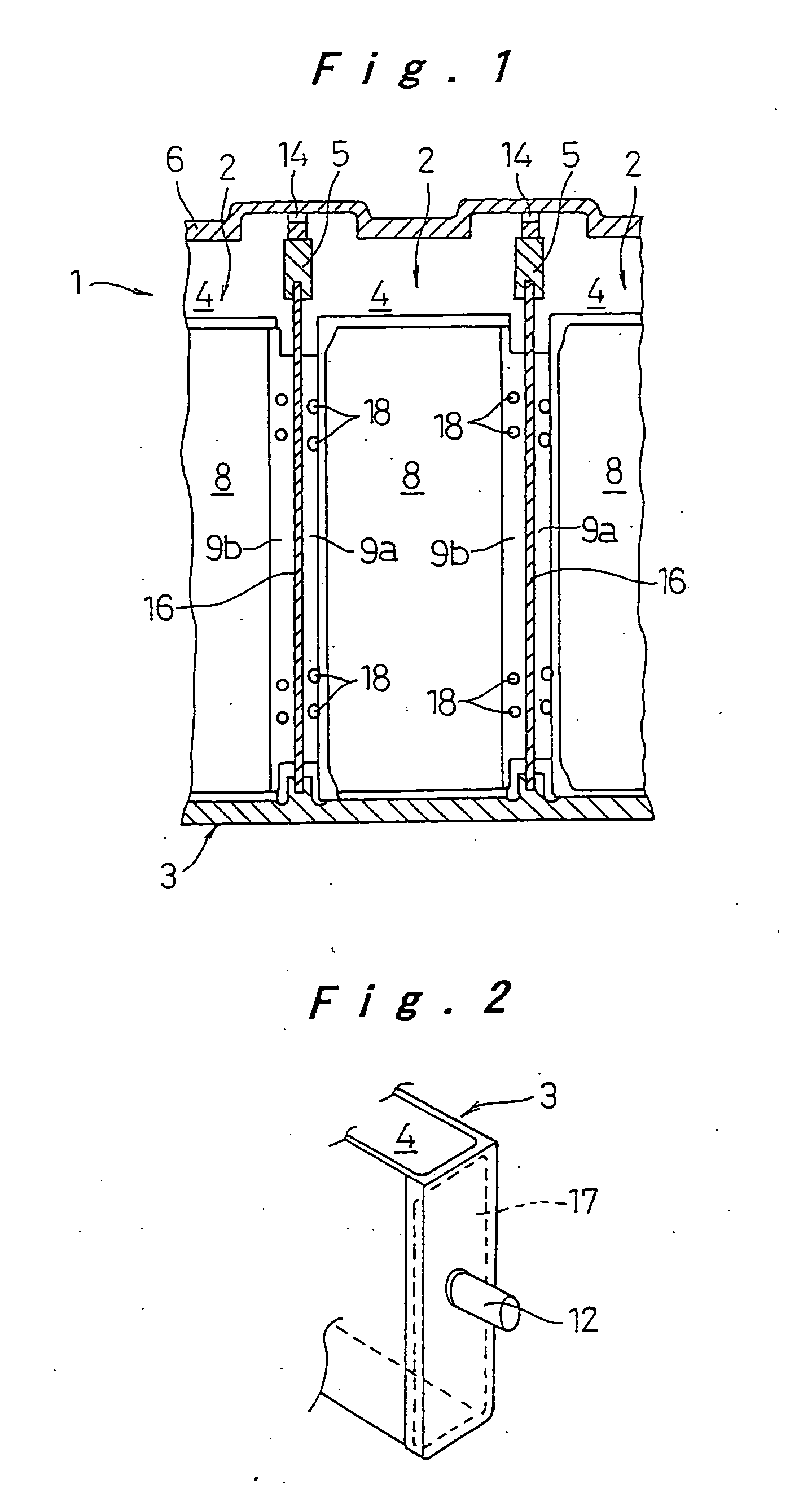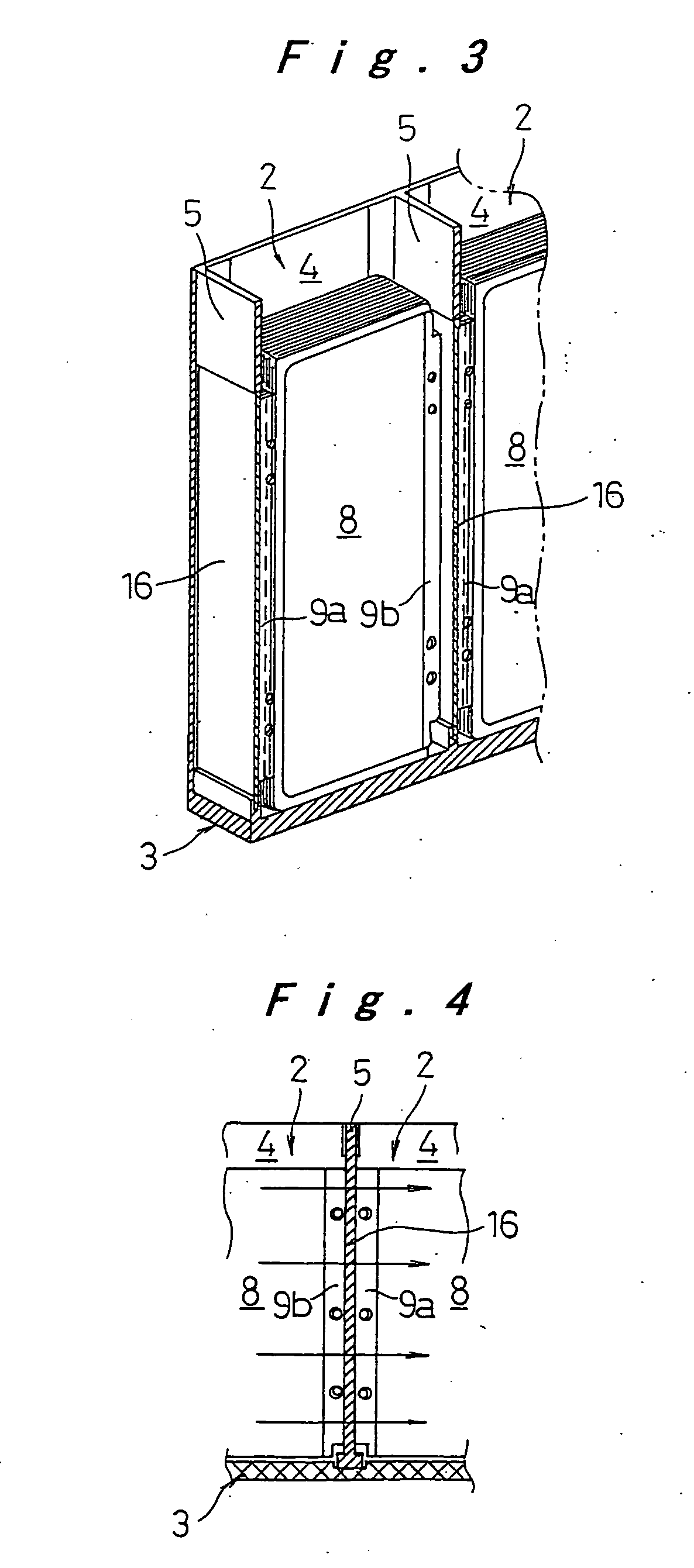Prismatic battery module and method for manufacturing the same
a battery module and battery technology, applied in the direction of cell components, flat cell grouping, sustainable manufacturing/processing, etc., can solve the problems of increasing the internal resistance, increasing the component resistance, and the entire connection path between the adjacent electrode plate group becoming longer, so as to reduce the internal resistance per cell
- Summary
- Abstract
- Description
- Claims
- Application Information
AI Technical Summary
Benefits of technology
Problems solved by technology
Method used
Image
Examples
first embodiment
[0051] A first embodiment of a prismatic battery module of the present invention will now be described with reference to FIGS. 1 through 5, in which elements identical to those of the prior art described with reference to FIGS. 32 and 33 are denoted by the same reference numerals. The following description is primarily directed to the differences from the prior art.
[0052] Referring first to FIGS. 1 to 3, a prismatic battery module 1 of the first embodiment includes a plurality of cells 2, each of which is constructed as a nickel metal hydride battery. A prismatic battery case 3, formed as a flat rectangular parallelepiped, includes a plurality of prismatic cell cases 4 for the cells 2. Each cell case 4 has short sides and long sides and is connected to adjacent ones by sharing the short sides, which serve as a separation wall 5 for forming the prismatic battery case 3. A lid 6 covers openings at the top of the cell cases 4 connected to one another. The lid 6 includes a communicatio...
second embodiment
[0059] Next, a second embodiment of the prismatic battery module of the invention is described with reference to FIGS. 6A and 6B. In the following description, elements identical to those described in reference to the previous embodiment are denoted by the same reference numerals and the description thereof will not be repeated. The embodiment, therefore, is described only in terms of the differences.
[0060] In this embodiment, a support pin 19 is placed through each of the support holes 18 formed in the lead portions 9a and 9b of the positive and the negative electrode plates of the electrode plate group 8. Also, vertical slots 20 are formed on the opposite side walls of the cell case 4 at positions opposite to one another on either side of the separation wall 5, which is arranged between the adjacent cell cases 4 of the prismatic battery case 3, so that the vertical slots 20 opposite to one another receive respective ends of the support pin 19 while ends of the lead portions 9a an...
third embodiment
[0063] Next, a third embodiment of the prismatic battery module of the invention is described with reference to FIGS. 7A and 7B.
[0064] In this embodiment, the planar connector plate 16 is welded to the lead portions 9a and 9b by applying a welding current that flows through a path between the adjacent support pins 19, which have been described in the second embodiment above and are arranged on both sides of the planar connector plate 16. The welding current flows through the support pin 19, the lead portions 9a, the planar connector plate 16, the lead portions 9b, and the support pin 19 adjacent to the first one to weld the contacts between the planar connector plate 16 and the lead portions 9a and 9b.
[0065] For this purpose, a pair of work openings 21 are preferably provided on the respective side walls of the prismatic battery case 3 for providing the welding current: one of the work openings 21 is formed on one of the opposite side walls at a position adjacent to one end of the...
PUM
| Property | Measurement | Unit |
|---|---|---|
| surface roughness | aaaaa | aaaaa |
| distance | aaaaa | aaaaa |
| electroconductive | aaaaa | aaaaa |
Abstract
Description
Claims
Application Information
 Login to View More
Login to View More - R&D
- Intellectual Property
- Life Sciences
- Materials
- Tech Scout
- Unparalleled Data Quality
- Higher Quality Content
- 60% Fewer Hallucinations
Browse by: Latest US Patents, China's latest patents, Technical Efficacy Thesaurus, Application Domain, Technology Topic, Popular Technical Reports.
© 2025 PatSnap. All rights reserved.Legal|Privacy policy|Modern Slavery Act Transparency Statement|Sitemap|About US| Contact US: help@patsnap.com



